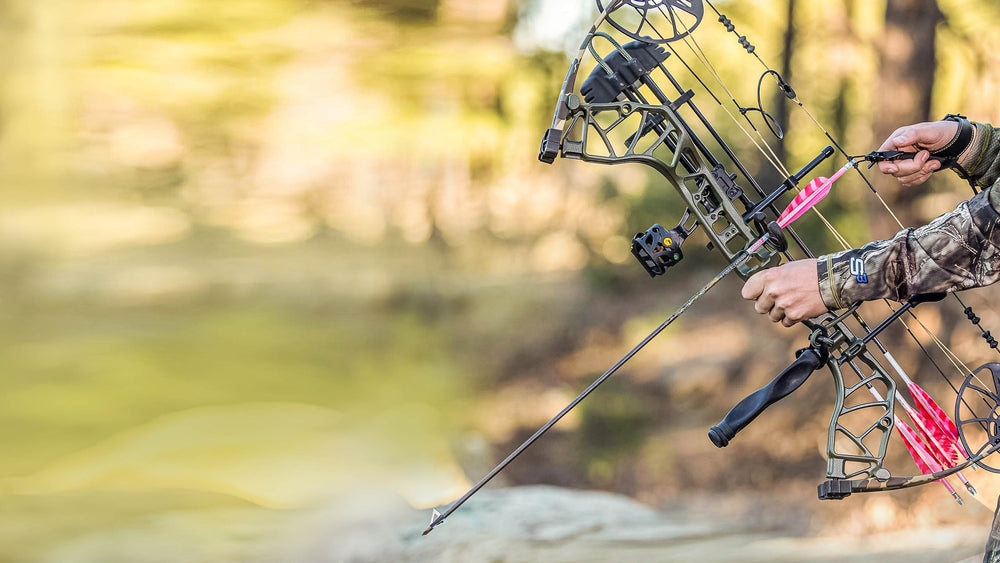Enhance Your Shooting Efficiency with Top-Rated Bow Stabilizers
Enhance Your Shooting Efficiency with Top-Rated Bow Stabilizers
Blog Article
Maximize Your Archery Precision With These Bow Stabilizer Techniques
One crucial component that can significantly affect your performance is the correct use of bow stabilizers. Whether you are a seasoned archer looking to fine-tune your abilities or a newcomer eager to enhance your accuracy, mastering these bow stabilizer methods might be the secret to striking your mark with unmatched consistency.
Benefits of Using Bow Stabilizers
Utilizing bow stabilizers can dramatically improve an archer's precision and overall efficiency by decreasing bow torque and resonance. Bow torque, brought on by the unequal circulation of weight in the bow, can cause incongruities in shot placement. By attaching a bow stabilizer, the weight is rearranged, minimizing the impacts of torque and helping the archer attain an extra constant shot. Furthermore, bow stabilizers wet vibration, which not only improves the convenience of capturing yet also stops the bow from leaping upon launch, therefore aiding in keeping proper objective.
Additionally, bow stabilizers can assist in holding the bow constant, specifically during gusty conditions or when shooting from longer distances. The included weight at the front of the bow provides security and balance, permitting the archer to concentrate on aiming without the interruption of bow activity. In general, the advantages of using bow stabilizers extend past simply precision, boosting the archer's experience and efficiency in different shooting scenarios.
Selecting the Right Bow Stabilizer
Selecting the ideal bow stabilizer is critical for enhancing your archery equipment and boosting shooting efficiency. Heavier stabilizers can assist reduce bow torque and soak up more vibration, leading to a steadier objective.

Finally, think about the layout of the stabilizer. Some stabilizers come with flexible weights or dampeners that permit you to customize the equilibrium and feeling of your bow. Eventually, picking the appropriate bow stabilizer includes locating a balance between weight, material, length, and layout to boost your shooting precision and total efficiency.
Correct Setup Strategies
To ensure optimum performance and safety in archery, understanding correct installment techniques for your bow stabilizer is crucial. The very first step in mounting a bow stabilizer is to identify the correct positioning on your bow. Many stabilizers are attached to the front of the riser, below the grasp, to help counterbalance the weight of devices such as views and quivers. Guarantee that the stabilizer is not conflicting with other components or hindering your capturing kind.
Following, firmly affix the stabilizer to the bow using the ideal installing hardware. It is essential to tighten up the stabilizer comfortably to stop any type of wobbling during shots. see this here Some stabilizers include adjustable weights that can be added or gotten rid of to fine-tune the equilibrium of your bow. Try out various weight setups to discover the optimum balance that fits your shooting design.

Changing Stabilizer Weight and Size
After guaranteeing the appropriate setup of your bow stabilizer, the next action includes readjusting the weight and size to maximize its efficiency in enhancing archery accuracy. The weight of the stabilizer plays a critical duty in reducing bow movement throughout the shot cycle.
A longer stabilizer can offer greater stability by increasing the distance in between the bow and the weight at the end of the stabilizer. Alternatively, a shorter stabilizer offers more ability to move and might be liked by archers who value agility and fast activities during shooting.
Advanced Stabilizer Tuning Tips
Accomplishing optimal bow stability and accuracy in archery demands a nuanced strategy to sophisticated stabilizer tuning. Advanced stabilizer adjusting here are the findings includes fine-tuning numerous elements to boost the bow's balance, lower vibration, and enhance overall accuracy. One key technique is to experiment with different stabilizer configurations, including back-bar and side-bar setups, to discover the perfect balance between security and ability to move for your capturing style. bow stabilizer. Additionally, changing the angle and positioning of the stabilizer can have a substantial effect on how the bow reacts upon release.
An additional important aspect of innovative stabilizer tuning is maximizing the damping residential properties of the stabilizer system. Discovering various materials for the stabilizer building and construction, such as carbon fiber or light weight aluminum, can likewise influence the bow's performance by modifying its weight distribution and tightness.
Conclusion
In conclusion, optimizing archery precision can be attained with the correct selection, installment, and modification of bow stabilizers. Generally, incorporating bow stabilizers right into archery practice can lead to better performance and increased precision.
Utilizing bow stabilizers can considerably enhance an archer's precision and overall efficiency by reducing bow torque pop over to these guys and resonance. Longer stabilizers offer higher security and balance, particularly for long-distance capturing, while shorter stabilizers offer even more convenience and are much easier to steer in limited rooms (bow stabilizer). Carbon fiber stabilizers are lightweight and resilient, while aluminum stabilizers are robust and supply excellent vibration moistening
A longer stabilizer can give greater stability by enhancing the range in between the bow and the weight at the end of the stabilizer.Another vital element of innovative stabilizer adjusting is maximizing the damping homes of the stabilizer system.
Report this page